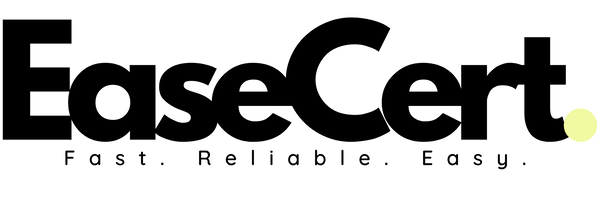
GPSR Risk Assessment Template
Ensuring product safety under the GPSR is a critical requirement for importers placing products on the European market. A structured GPSR risk assessment template helps businesses systematically evaluate potential product hazards, identify compliance gaps, and implement corrective actions to meet EU safety standards.
A well-organized GPSR risk analysis template enables economic operators to streamline the compliance process, reducing the risk of product recalls, safety incidents, and non-compliance penalties. Below, we provide a detailed overview of the key components of a GPSR-compliant risk assessment and how it supports consistent product safety and regulatory adherence. Download our GPSR Risk Analysis Template for a structured approach to evaluating product safety risks.
By using a standardized GPSR risk assessment template, companies can ensure thorough product safety evaluations, covering all essential legal requirements, hazard identification, and mitigation measures. Download our GPSR risk analysis template to simplify your compliance process and strengthen your product safety framework.
Key Sections of a GPSR-Compliant Risk Assessment
Section 1 – Economic Operator Information
This section identifies all economic operators involved in the product’s supply chain, including the manufacturer, authorized representative, importer, and responsible person. Accurate and complete documentation of this information ensures clear accountability and traceability, which are essential for maintaining regulatory compliance.
- Manufacturer – Include the company’s full legal name, trade name, postal and electronic address, telephone number, and primary contact person.
- Authorised Representative – If the manufacturer is located outside the EU, the authorized representative’s information must be provided.
- Importer – The importer’s contact details are required to ensure proper product traceability.
- Responsible Person – If different from the manufacturer, the designated EU representative must be identified, as they hold legal responsibility for product safety compliance.
Section 2 – General Product Description
A detailed product description is essential for evaluating product-specific hazards and safety requirements. This section includes:
- Product Name and Function – State the product’s intended use and how it functions.
- Essential Safety Characteristics – Describe safety-critical features such as small parts, sharp edges, or materials that could pose choking or injury risks.
- Composition Details – Provide information on raw materials or the Bill of Materials (BOM).
- Age Grading – Specify the intended user age group, such as infants, children, or adults, to identify age-specific safety risks.
Section 3 – Applicable Legal Requirements & Standards
Products must comply with all relevant EU safety regulations and standards. This section identifies the key regulations applicable to your product, including:
- General Product Safety Regulation (EU/2023/988) – The overarching regulation governing product safety in the EU.
- REACH Regulation (EC 1907/2006) – Covers restricted substances and substances of very high concern (SVHC).
- Persistent Organic Pollutants Regulation (EU/2019/1021) – Regulates the use of certain harmful chemicals.
- Electromagnetic Compatibility Directive (2014/30/EU) – Ensures electronic products do not generate harmful electromagnetic interference.
- Harmonized Standards – Include EN 71 for toys, IEC standards for electronics, and other product-specific safety standards.
Section 4 – Product Design Evaluation
A thorough evaluation of product design helps identify and mitigate potential safety risks. This section covers various types of hazards:
Physical & Mechanical Hazards
- Risks from sharp edges, moving parts, entrapment, and choking hazards.
- Stability issues such as tipping or collapsing.
- Compliance with standards like EN 71-1 and ISO 8124.
Flammability & Thermal Hazards
- Fire risks, overheating, and contact with hot surfaces.
- Compliance with standards such as EN 71-2 and flammability regulations for textiles and furnishings.
Chemical Hazards
- Presence of restricted chemicals, toxic substances, heavy metals, and allergens.
- Compliance with REACH Annex XVII, CLP labelling, and RoHS Directive.
Electrical Hazards
- Battery overheating, electric shock, and short-circuit risks.
- Compliance with EN 62133, IEC 60335, and the Low Voltage Directive (2014/35/EU).
Hygiene & Microbiological Hazards
- Risks from bacterial or fungal contamination.
- Compliance with standards like USP 50, 51 and ISO 22196.
Radiation & Optical Hazards
- Risks from LED emissions, laser exposure, and UV or IR radiation.
- Compliance with EN 62233, IEC 62471, and the EMC Directive (2014/30/EU).
Section 5 – Risk Analysis and Findings
The risk analysis phase involves categorizing identified hazards based on severity and likelihood:
- Critical Risk – Life-threatening hazards requiring immediate corrective measures (e.g., electrical shock, toxic chemicals).
- Major Risk – Risks that could cause serious injury or property damage, mitigated through design changes or compliance adjustments.
- Minor Risk – Low-severity risks that can be addressed through minor product modifications or user instructions.
- Manufacturing Concerns – Quality control issues such as foreign body contamination, improper assembly, or material inconsistencies.
A structured GPSR risk assessment template allows companies to clearly define each risk level and outline appropriate mitigation strategies.
Section 6 – Labeling Requirements
Proper labeling ensures user safety and regulatory compliance so that consumers are informed about potential hazards and correct product usage. Labeling requirements include:
- Product Safety Warnings – Include information on age restrictions, choking hazards, and other safety notices.
- Compliance Markings – Include CE marking and other mandatory EU symbols.
- User Instructions – Provide clear guidance on product maintenance, storage, and safe use.
Final Declaration of Safety Compliance
Upon completion of the GPSR risk assessment, this declaration serves as proof of compliance and is essential for product traceability and market access in the EU.
Why Use a GPSR Risk Assessment Template?
Using a structured GPSR risk analysis template simplifies the complex process of product safety evaluation and regulatory compliance. It ensures that all hazards are systematically identified, assessed, and mitigated. Download our GPSR Risk Analysis Template for a structured approach to evaluating product safety risks. A GPSR-compliant risk assessment template helps businesses:
- Improve product safety and consumer protection.
- Avoid non-compliance penalties and product recalls.
- Ensure smooth market entry and product acceptance in the EU.
- Strengthen brand reputation and customer trust.
Get Expert Guidance on GPSR Compliance
At EaseCert, we specialize in helping businesses meet GPSR compliance requirements efficiently and accurately. Our GPSR risk assessment template provides a comprehensive framework for evaluating product safety risks, ensuring full compliance with EU regulations. Contact us today for expert guidance on risk assessments, regulatory obligations, and product certification solutions. Contact us for expert guidance on risk assessments, regulatory obligations, and certification solutions.
Learn More About GPSR:

